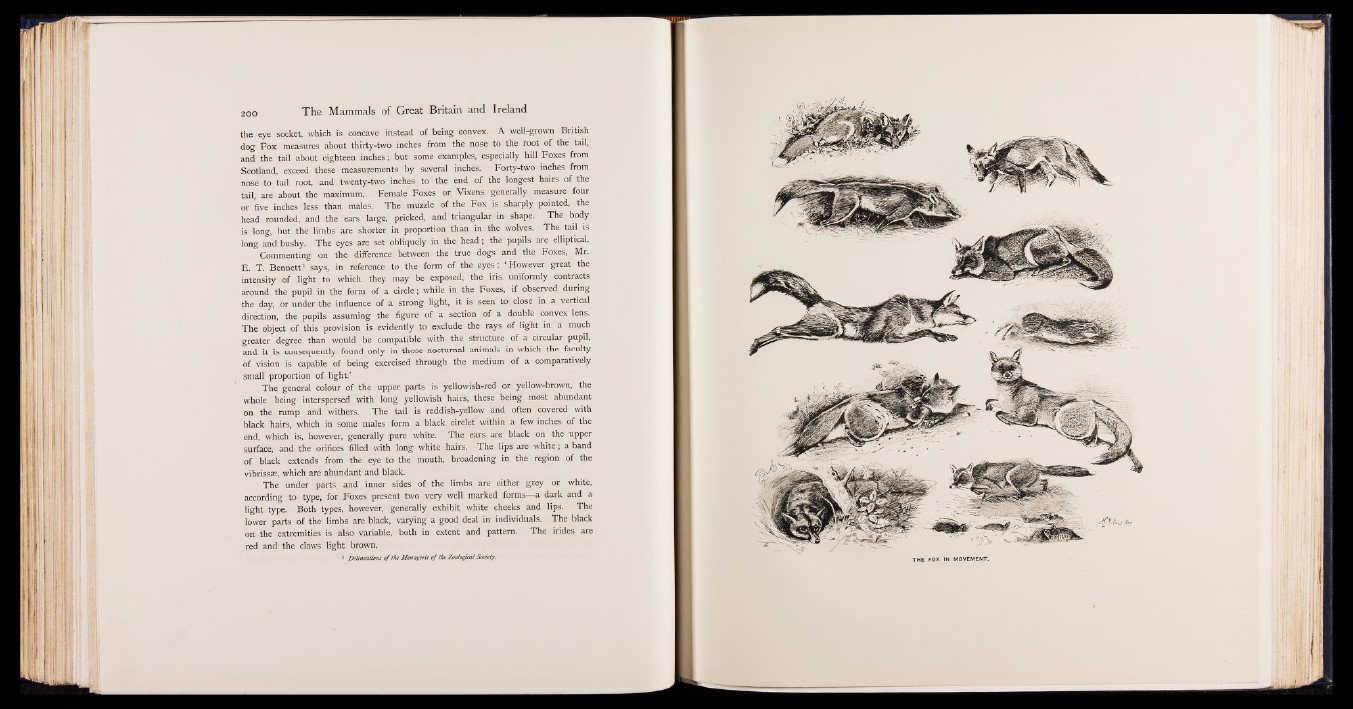
the eye socket, which is concave instead of being convex. A well-grown British
dog Fox measures about thirty-two inches from the nose to the root of the tail;
and the tail about eighteen inches; but some examples, especially hill Foxes from
Scotland, exceed these measurements by several inches. Forty-two inches from
nose to tail root, and twenty-two inches to the end of the longest hairs of the
tail, are about the maximum. Female Foxes or Vixens generally measure four
or five inches less than males. The muzzle of the Fox is sharply pointed, the
head rounded, and the ears large, pricked, and triangular in shape. The body
is long, but the limbs are shorter in proportion than in the wolves. The tail i$
long and bushy. The eyes are set obliquely in the head; the pupils are elliptical.
Commenting on the difference between the true dogs and the Foxes, Mr.
E. T. Bennett1 says, in reference to the form of the eyes: ‘ However great the
intensity of light to which they may be exposed, the iris uniformly contracts
around the pupil in the form of a circle; while in the Foxes, if observed during
the day, or under the influence of a strong light, it is seen to close in a vertical
direction, the pupils assuming the figure of a section of a double convex lens.
The object of this provision is evidently to exclude the rays of light in a much
greater degree than would be compatible with the structure of a circular pupil,
and it is consequently found only in those nocturnal animals in which the faculty
of vision is capable of being exercised through the medium of a comparatively
small proportion of light.'
The general colour of the Upper parts is yellowish-red or yellow-brown, the
whole being interspersed with long yellowish hairs, these being most abundant
on the rump and withers. The tail is reddish-yellow and often covered with
black hairs, which in some males form a black circlet within a few inches of the
end, which is, however, generally pure white. The ears are black on the upper
surface, and the orifices filled with long white hairs. The lips are white; a band
of black extends from the eye to the mouth, broadening in the region of the
vibrissas, which are abundant and black.
The under parts and inner sides of the limbs are either grey or white,
according to type, for. Foxes present two very well marked forms— a dark and a
light type. Both types, however, generally exhibit white cheeks and lips. The
lower parts of the limbs are black, varying a good deal in individuals. The black
on the extremities is also variable, both in extent and pattern. The irides are
red and the claws light brown,
1 Delineations o f the Menagerie o f the Zoological Society. THE FOX MOVEMENT.